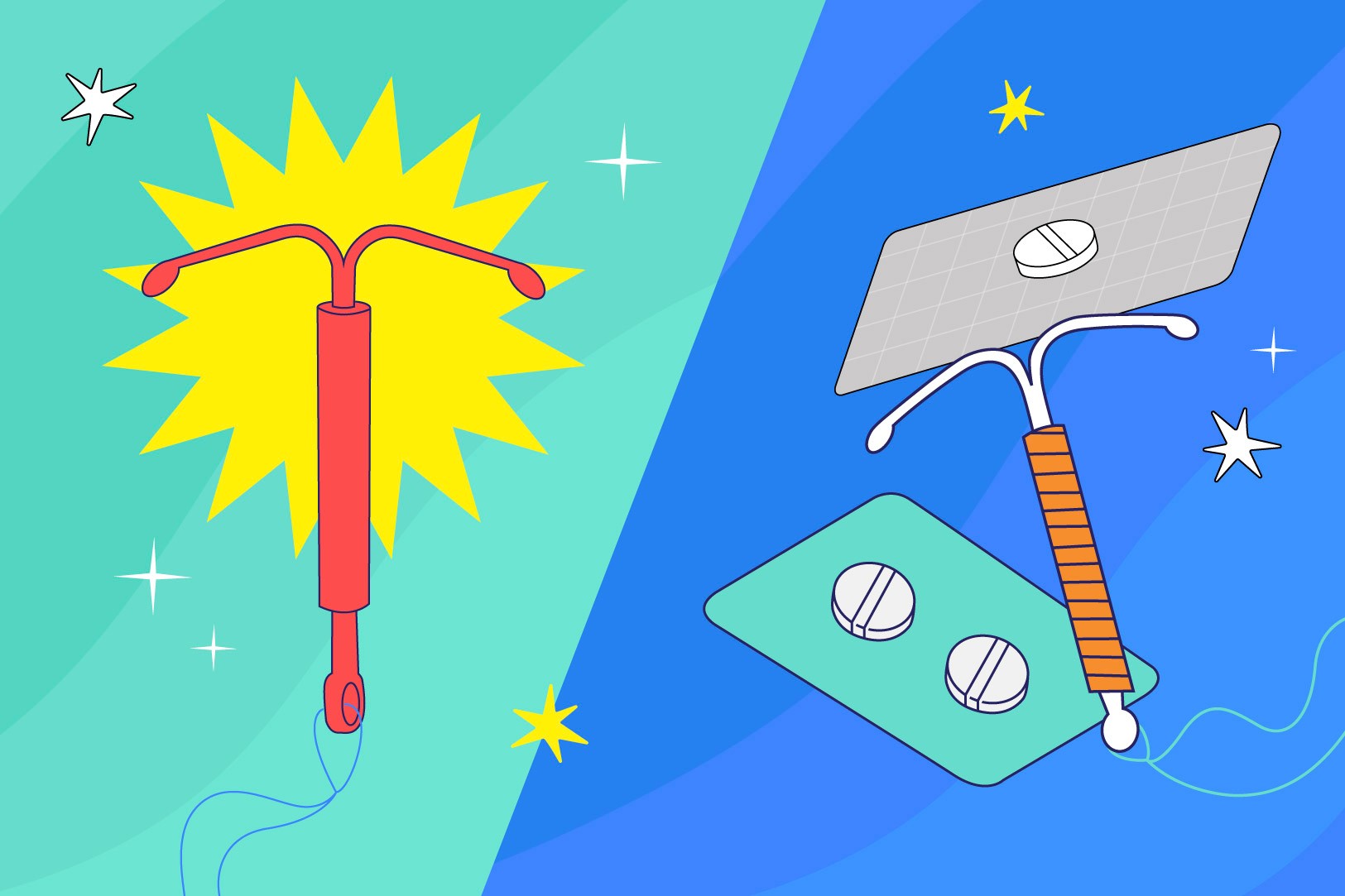Emergency contraception is a crucial option for individuals seeking to prevent pregnancy after unprotected intercourse or contraceptive failure. Among the various methods available, the hormonal IUD (Intrauterine Device) is gaining recognition. This article explores how the hormonal IUD functions as an emergency contraceptive method, its mechanism, and its benefits compared to other options.
What is a Hormonal IUD
A hormonal IUD is a small, T-shaped plastic device that is inserted into the uterus by a healthcare provider. It releases a hormone called levonorgestrel, which is similar to the natural hormone progesterone produced by the ovaries. This hormone thickens the cervical mucus to prevent sperm from reaching the egg and thins the lining of the uterus to prevent implantation.
How the Hormonal IUD Functions
Once inserted, the hormonal IUD continuously releases levonorgestrel into the uterus. This hormone works primarily in three ways:
Thickening Cervical Mucus: It thickens the mucus in the cervix, making it difficult for sperm to enter the uterus.
Thinning the Uterine Lining: It thins the endometrial lining, reducing the likelihood of a fertilised egg implanting.
Inhibiting Sperm Mobility: It may also reduce sperm motility and viability, preventing them from reaching the egg.
Hormonal IUD as an Emergency Contraceptive
The hormonal IUD can function as an emergency contraceptive if inserted within five days after unprotected intercourse. The high dose of levonorgestrel released initially can “fool” the body, similar to how the morning-after pill works, by preventing ovulation and creating an inhospitable environment for sperm and egg interaction.
Comparison with Other Emergency Contraceptive Methods
There are several emergency contraception options available:
Morning-After Pill (Plan B): A pill that contains levonorgestrel, effective if taken within 72 hours.
Ulipristal Acetate (Ella): A pill that can be taken up to five days after intercourse.
Copper IUD: Non-hormonal IUD that can also be used as emergency contraception.
The hormonal IUD offers a dual benefit: immediate emergency contraception and long-term birth control, reducing the need for future emergency interventions.
Effectiveness of Hormonal IUD for Emergency Contraception
Recent studies have validated the efficacy of the hormonal intrauterine device (IUD) as emergency contraception. Both the levonorgestrel IUDs, such as Liletta and Mirena, and the copper IUDs are highly effective when inserted within five days of unprotected intercourse, with failure rates comparable to the well-established 0.1%-0.2% for copper IUDs. The levonorgestrel IUD not only prevents pregnancy effectively post-intercourse but also offers ongoing contraception for up to 5 years. This dual functionality is advantageous for providing immediate emergency contraception and continuous protection without subsequent interventions (American College of Obstetricians and Gynecologists [ACOG], 2021; Turok et al., 2021).
Importance of Using Contraception Methods on a Daily Basis
While emergency contraception like the hormonal IUD can be a vital tool, it is essential to use a reliable contraceptive method on a daily basis to avoid the stress and potential risks associated with emergency options. Consistent use of a chosen contraceptive method ensures better control over reproductive health and reduces the likelihood of unintended pregnancies. To explore and compare different contraceptive methods, you can visit Find My Method, where users can find the perfect option that suits their needs and lifestyle.
Benefits and Challenges of Using Hormonal IUD
Benefits:
- High Effectiveness: One of the most reliable forms of emergency contraception.
- Long-Term Protection: Provides continuous birth control for several years.
- Convenience: Eliminates the need to remember daily pills or frequent contraceptive measures.
- Reduced Menstrual Symptoms: Can decrease menstrual bleeding and cramping over time.
Note: Here you can find more information about the advantages of the Hormonal IUD
Challenges:
- Insertion Process: Requires a medical procedure, which can be uncomfortable for some.
- Side Effects: Some individuals may experience side effects like irregular bleeding, headaches, or breast tenderness.
- Initial Cost: The upfront cost can be higher compared to other emergency contraceptives.
Frequently Asked Questions (FAQs)
1. How soon after unprotected intercourse should the hormonal IUD be inserted?
The hormonal IUD should be inserted within five days of unprotected intercourse for it to function effectively as an emergency contraceptive.
2. Can the hormonal IUD be used by anyone?
The hormonal IUD is suitable for most individuals with a uterus, but it is essential to consult a healthcare provider to ensure it is the right option based on individual health conditions and needs.
3. What should I expect during the insertion procedure?
The insertion procedure involves a healthcare provider placing the IUD into the uterus, which can cause some discomfort or cramping. It typically takes a few minutes, and any pain usually subsides shortly after.
Are there any long-term side effects of using a hormonal IUD?
Most people tolerate the hormonal IUD well, but some may experience side effects such as irregular bleeding or hormonal changes. These side effects often diminish after the first few months of use.
Conclusion
The hormonal IUD is a highly effective and versatile option for emergency contraception. Its ability to provide immediate and long-term protection makes it a valuable choice for many individuals.
References
American College of Obstetricians and Gynecologists. (2021). ACOG practice bulletin: Emergency contraception. Retrieved from ACOG
Turok, D. K., Gero, A., Simmons, R. G., Kaiser, J. E., Stoddard, G. J., Sexsmith, C. D., Gawron, L. M., & Sanders, J. N. (2021). Levonorgestrel vs. copper intrauterine devices for emergency contraception. New England Journal of Medicine, 384(4), 335-344. doi:10.1056/NEJMoa2022141
World Health Organization. (n.d.). Emergency contraception. Retrieved July 4, 2024, from https://www.who.int/news-room/fact-sheets/detail/emergency-contraception
National Institute of Child Health and Human Development. (2021, February 4). Levonorgestrel IUD found to be effective for emergency contraception. Retrieved July 4, 2024, from https://www.nichd.nih.gov/newsroom/news/020421-levonorgestrel
UpToDate. (n.d.). Emergency contraception: Beyond the basics. Retrieved July 4, 2024, from https://www.uptodate.com/contents/emergency-contraception-beyond-the-basics/print
University of Utah Health. (2021, January 27). Hormonal IUDs are a viable and underutilized method for emergency contraception. Retrieved July 4, 2024, from https://healthcare.utah.edu/publicaffairs/news/2021/01/hormonal-iud-emergency-contraception.php
Merck Manual. (2023, July). Emergency contraception. Retrieved July 4, 2024, from https://www.merckmanuals.com/professional/gynecology-and-obstetrics/family-planning/emergency-contraception
Clearblue. (n.d.). 14 common questions about emergency contraception. Retrieved July 4, 2024, from https://www.clearblue.com/14-common-questions-about-emergency-contraception
U.S. Pharmacist. (n.d.). Emergency contraception: What pharmacists need to know. Retrieved July 4, 2024, from https://www.uspharmacist.com/article/emergency-contraception-what-pharmacists-need-to-know


